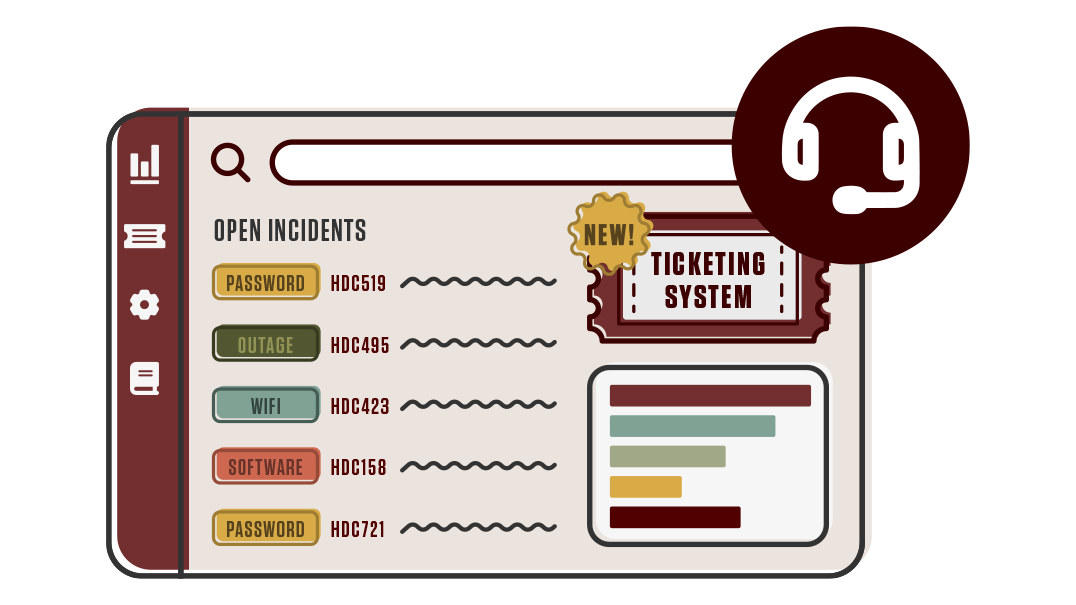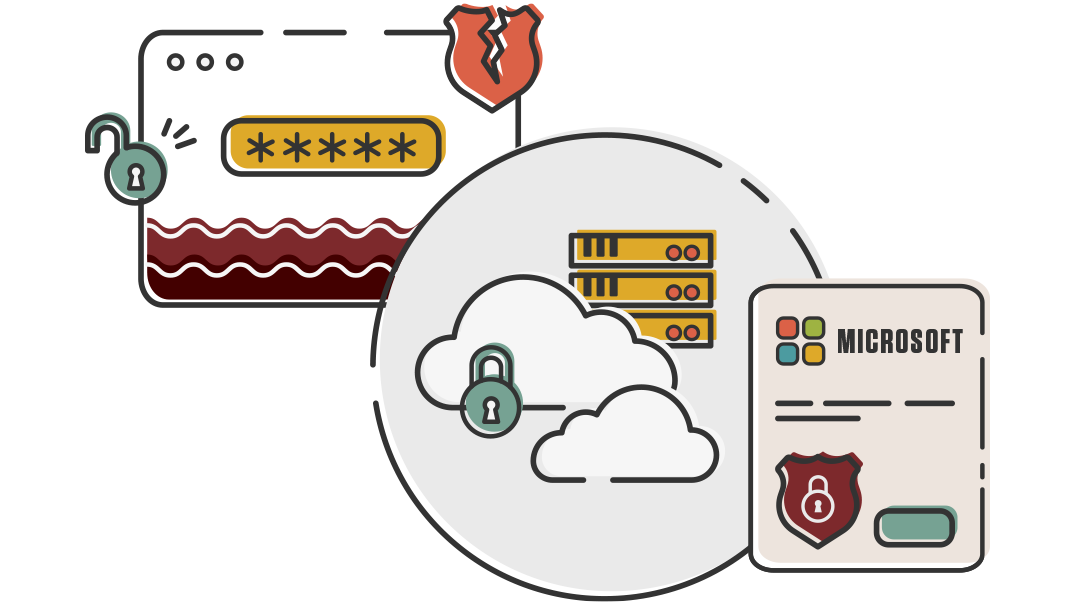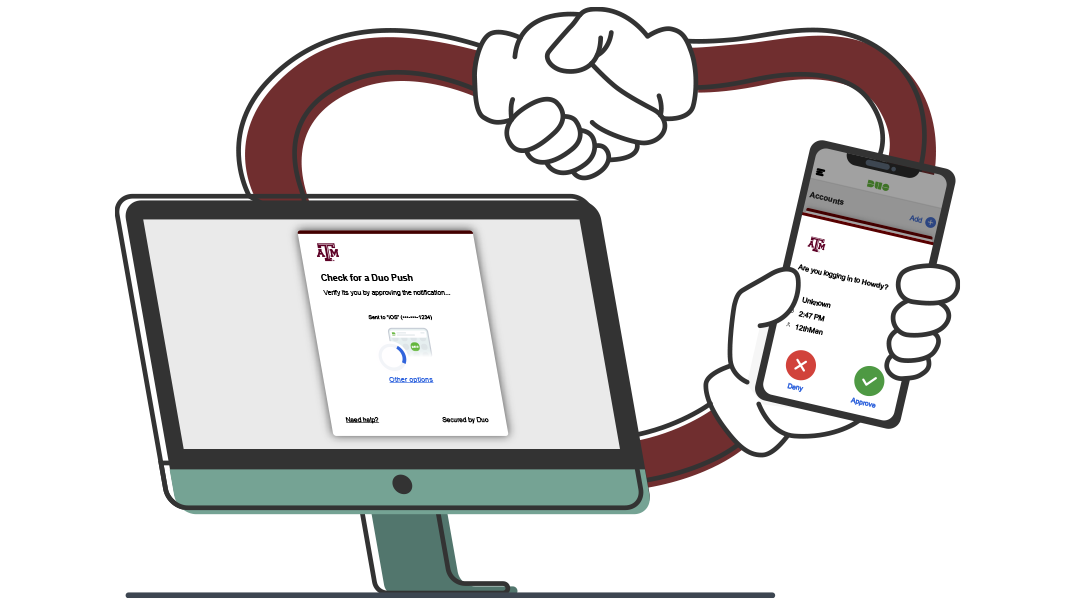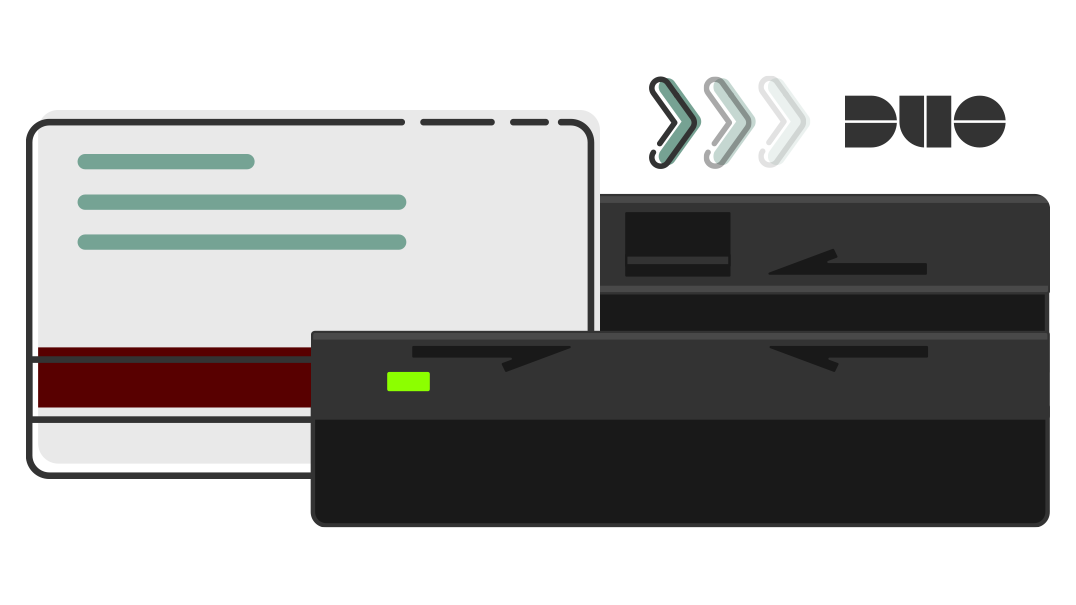Achievements
Technology Services continually seeks ways technology can solve problems and save our partners and the university time and money. When students, faculty and staff are empowered to achieve excellence in teaching, research and service, we all succeed.

Looking Forward
Centralizing help desk & ticketing system
A key component in supporting the new organizational structure at Texas A&M includes establishing a university-wide help desk and ticketing system to handle requests for technology support. The enterprise system will become the main point of contact for all IT issues for employees and students to ensure higher quality, consistent customer service. Texas A&M currently has more than 16 ticketing systems with various processes in place. A central help desk system will provide campus members with a streamlined solution to create a ticket and provide broad insights on the health of campus technology. Campus members will only need to remember a single email address or URL to get assistance. Technology Services selected TeamDynamix after three vendor demonstrations and will incrementally transition campus to this tool in January 2023. Common processes and documentation will also be developed so the tool is used consistently across campus.
Looking Forward
Technology Services implementing new cybersecurity measures
Each month, Technology Services blocks around 37 billion cyber attacks and 99 percent of all incoming malicious network traffic. In an effort to always work toward top-notch cybersecurity, Technology Services provides guides and training opportunities for campus staff, faculty and students, and launches a cybersecurity awareness month campaign each October. This campaign aims to increase awareness and educate the campus community on the foundational principles of cybersecurity to avoid being scammed or compromising equipment. Additionally, the Technology Services team has launched campus-wide initiatives like Duo two-factor authentication and identified a new system to consolidate and record all IT assets across campus. The Technology Services team works closely with The Texas A&M University System Security Operations Center and with the dedicated university privacy officer in the Office of Risk, Ethics and Compliance.
Looking Forward
Unified project management
To support efficiencies and delivery of IT support campus wide, Technology Services invested in identifying employees to serve as designated project managers to support the university’s high-profile technology initiatives. Three existing project management offices (Technology Services, Technology Services - Provost IT and Technology Services - Student Affairs) were centralized into one. This will ultimately allow for the implementation of a single intake process for projects and allow employees to work closely with the recently launched business relationship unit serving the unified Technology Services team.

Networking
Next Generation Aggie Network
The Next Generation Aggie Network is a three-year, multi-million-dollar effort to modernize the Texas A&M University campus with 6E wireless technology and transform the campus digital experience by providing faster, consistent internet access across campus. It will expand Wi-Fi coverage in high-traffic outdoor areas and provide better support for data-intensive research efforts across the 5,200-acre campus.
As Technology Services prepares to launch the Next-Gen Network, approximately 240 buildings have had new fiber installed, which provides a consistent, high-speed fiber-optic backbone that allows for robust connectivity inside of each building. More than 7,000 wireless access points have been identified for upgrades and ultimately the number of access points will more than double, resulting in almost 20,000 6E wireless access points on campus. These access points will be installed by zones and will boost wireless coverage in needed areas identified through surveys.
Other examples of preparation happening across campus include work on the Texas A&M Health Science Center network, with the Next-Gen Network team proactively surveying wireless signals, network switches and equipment closets. This initiative will create network parity across the main Texas A&M campus and the Health Science Center. Phase 1 of the project is nearing completion with Phase 2 set to begin in 2023.
Networking
Streamlined guest wireless experience
In December 2022, Technology Services launched a redesigned and more secure guest wireless experience. The old process required visitors to submit an email or phone number to gain access to the internet. This was a slower process that required approval by campus cybersecurity. Now when campus visitors click to join the Texas A&M campus network, they are directed to a page asking them to agree to the terms and conditions, much like requesting to join a hotel guest network. Once guests have agreed to the terms of service, they are immediately granted five days of internet access. Guest wireless networks are necessary because they allow cybersecurity teams to restrict guest activity, giving visitors access to an internet connection and nothing else.
This new network also provides a more secure environment for visitors and campus members. All internet traffic is directed to a demilitarized zone (DMZ), a more secure and isolated area outside the front gates of a network’s firewall, giving Technology Services the ability to monitor traffic more efficiently. By streamlining and upgrading the guest wireless network, the Texas A&M campus community and its guests can continue with their visits as planned, in a more efficient and secure manner.
Cybersecurity
A single source of truth for campus technology
With Texas A&M University being the largest university in Texas and among the largest in the nation, it’s no surprise a solution is needed to merge multiple information sources and streams into a single source. Axonius, a cybersecurity asset management system, was procured in 2022 to gather data from various systems and provide a holistic view of the computers, servers and other technology assets in use on campus. In order to implement Axonius, Technology Services collaborated with IT professionals across the university to pull all relevant system data into the tool. Once fully implemented, Axonius will streamline asset management, making it easier to effectively monitor tens of thousands of campus IT assets in a single dashboard.

Cybersecurity
Modern authentication keeps Texas A&M safe
Technology Services ensures Texas A&M University is safe from millions of cyber attacks each year. Securing email is essential as more than 75% of cyberattacks begin with an email message. After migrating the on-premise Texas A&M Exchange email to the cloud-based Microsoft 365, Technology Services saw an opportunity to ramp up email security by moving all Microsoft 365 accounts from basic authentication to modern authentication by September 1, 2022. Modern authentication is more secure because it requires multi-factor authentication like DUO, a capability not possible with basic authentication.
Throughout the spring and summer, Technology Services collaborated with divisions, units and departments across campus to move all Microsoft 365 email accounts to modern authentication. The process involved targeted communication efforts and hands-on assistance from distributed IT professionals and Help Desk Central, including extensive self-help documentation and virtual Q&A sessions for staff and faculty. A dynamic PowerBI Dashboard was also created so campus IT professionals could track which users and devices were still using basic authentication. This proactive approach prevented numerous obstacles as staff and faculty began moving to new organizations during early centralization efforts.
All accounts were transitioned to modern authentication well before the start of the fall semester. By successfully completing this effort, Technology Services ensured Texas A&M email accounts are safer and university IT services are less susceptible to attack by compromised accounts.

Cybersecurity
Duo interface changes
In fall 2022, Technology Services upgraded its Duo two-factor authentication interface, which makes logging into Texas A&M applications simpler and more secure. Technology Services made this change ahead of schedule as the Duo vendor required all interfaces to be updated before early 2023. This implementation timeline allowed Technology Services to avoid interference with the beginning or end of an academic semester.

Cybersecurity
Duo enrollment stations
Technology Services is making Duo two-factor enrollment easier with a self-service kiosk on the main Texas A&M campus at Help Desk Central. This kiosk enables the campus community to enroll a second device by swiping any Texas A&M ID at the kiosk. Technology Services will unveil more of these kiosks to the campus community in 2023.